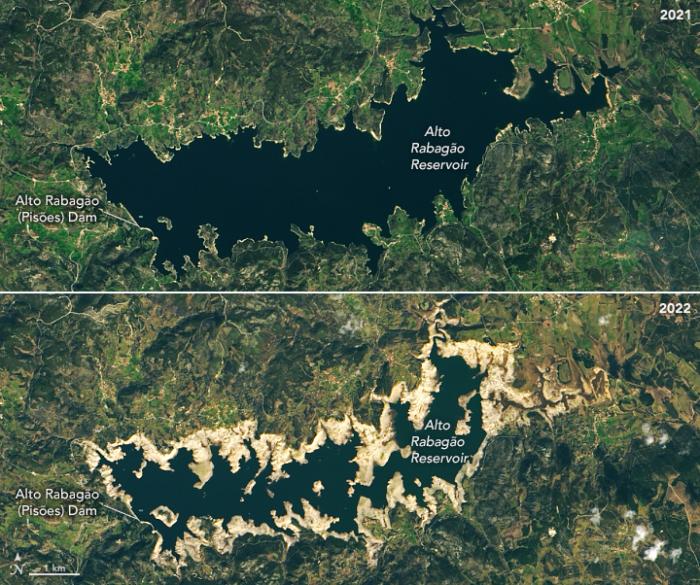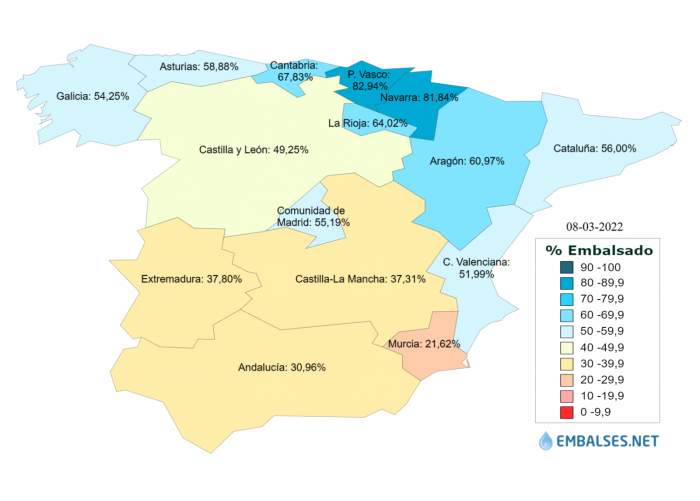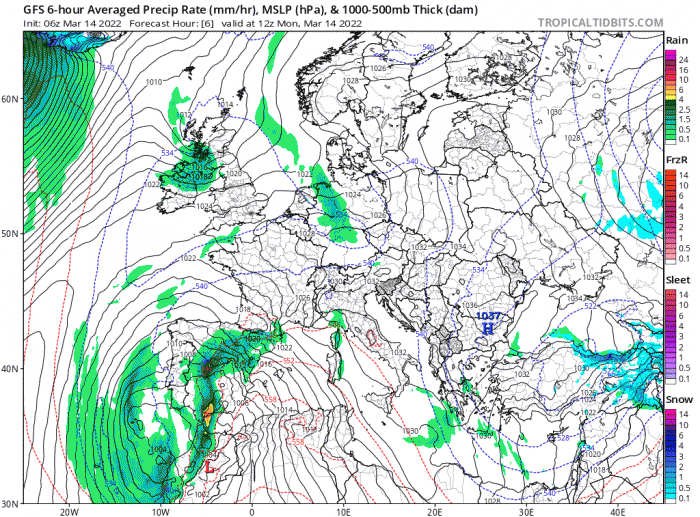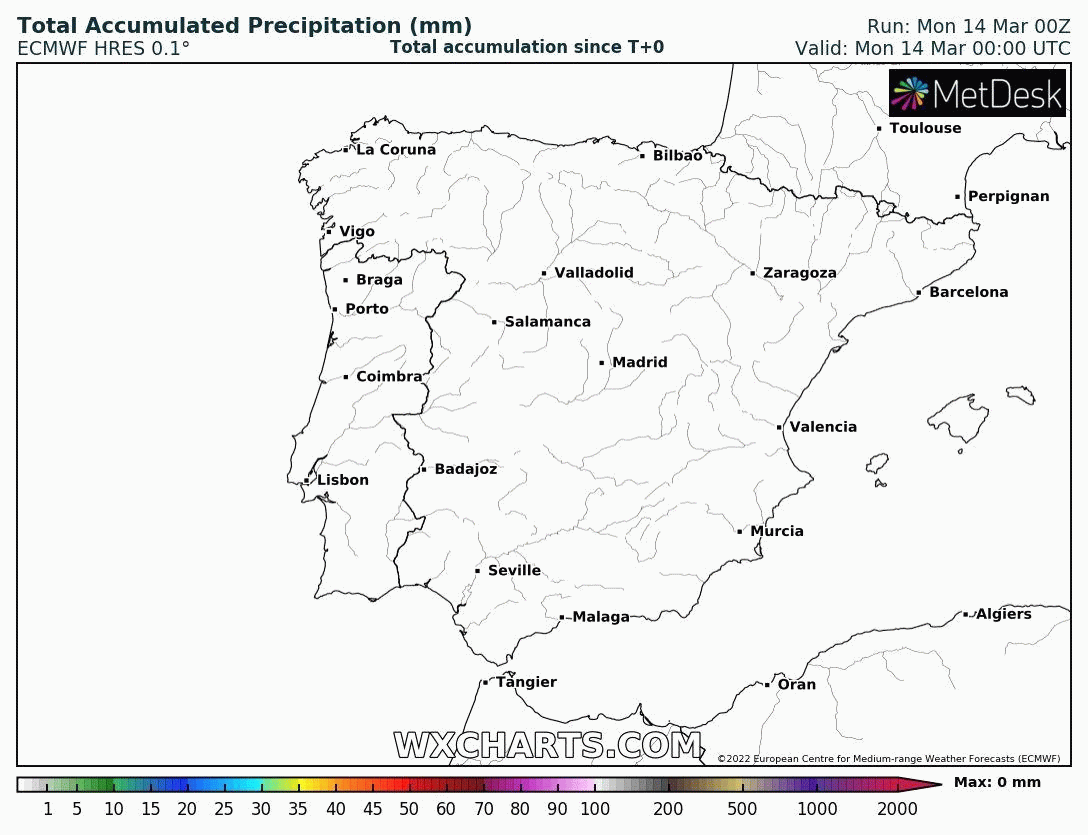
Spain and Portugal have been hit by severe drought during the past winter. The drought started in November 2021 and by late January much of the Iberian Peninsula away from the far north was experiencing moderate to severe drought by the end of January. Spain saw its driest January in 20 years, with reservoirs depleted to 45 per cent of their capacity on average. One dam on the Spanish / Portuguese border that emptied to 15% of its capacity saw a ghost village emerge. The village of Aceredo in Spain’s northwestern region of Galicia was flooded in 1992 and it’s the first time it's emerged in winter since the dam’s creation 30 years ago, though the usually submerged village does appear in dry summers.
The drought in parts of Portugal has been exacerbated by over exploitation by agriculture and also to produce electricity from hydroelectric dams, with Portugal’s government ordering some of its 60 dams to heavily restrict water use for electricity and irrigation in early February. The dams produce around 30% of Portugal’s electricity each year.

Source: NASA Earth Observatory
Overall, around 50% of Spanish farms are at risk of reduction of crops such as cereals, olives, citrus fruit, nuts and vineyards due to restrictions on irrigation if there is no improvement to rainfall in March and April. The hotter months between May and October see little if any rainfall making a prolonged difference to river and reservoir levels.
Reservoir levels by Spanish region as of 8th March 2022

However, there is finally some ongoing relief to the drought at the moment across the Iberian Peninsula. A slow-moving low pressure system looks to bring bouts of rain or showers this week and likely into next week too. The rain arrived from the west on Friday and there’s been spells of rain or showers moving in from the Atlantic across the Iberian Peninsula over the weekend, as an upper trough moved into western Europe. The upper trough disrupts to form a cut-off upper low to start this week, these closed upper lows tend to become slow-moving, so a low pressure system will be centred close to southern Iberia or northern Morocco throughout this week.
Low pressure system centred close to Iberia and Morocco today will not move very far this week, bringing spells of rain or showers

Bands of rain or showers will spiral around the low through this week across the Iberian Peninsular and Morocco - which will also welcome any rain after a very dry winter, with drought issues. There may be some local flooding across southern and eastern parts of Spain too – where there could be some thunderstorms or heavy rain, with 20 mm of rain falling in an hour in places, perhaps 50-100mm in a day or two. There could be further rain or shower at times next week, particularly the first half.

Source: wxcharts.com
The rain should ease the drought across parts of Iberia, but will not resolve the ongoing drought problem, as the water reserves really need to be replenished from winter rains that were absent for much the past winter. Any gains in levels in water reserves this month and next may be lost in the hotter months, when much higher water demand from agriculture, factories and domestic use along with higher evaporation rates will deplete levels more quickly than now. Ideally there needs to be a wet Spring across the Iberian Peninsula to reduce the risk of a serious drought this summer with the associated restrictions of water use this would impose, which could damage and reduce agricultural produce that much of northern Europe relies on for imported food, particularly fresh produce. Not only will low water levels cause problems for supplying water, parched tinder-dry landscapes from prolonged drought also poses a fire risk, particularly forested areas. Portugal has been particularly hit by raging forest fires in recent years and there’s a fear that if little rain falls over the coming months, forest fires could become an issue.
The drought-stricken parts of Spain and Portugal may be hoping for a repeat of March 2018, when after 11 consecutive months of consistently dry conditions with below average rainfall, the drought ended when Portugal saw 272mm of rain that month, four times the 1981-2010 average, while Spain saw 161mm, three times the 1981-2010 average. Some places in the south of Spain saw 19 consecutive days of rain.
But with climate change, long-term drought may become an increasing problem across the Iberian Peninsula, with a recent trend for rain-bearing Atlantic weather systems increasingly tracking too far north in winter and instead high pressure dominates across southwest Europe, conditions more associated with summer, bringing days on end of dry conditions.
Loading recent activity...